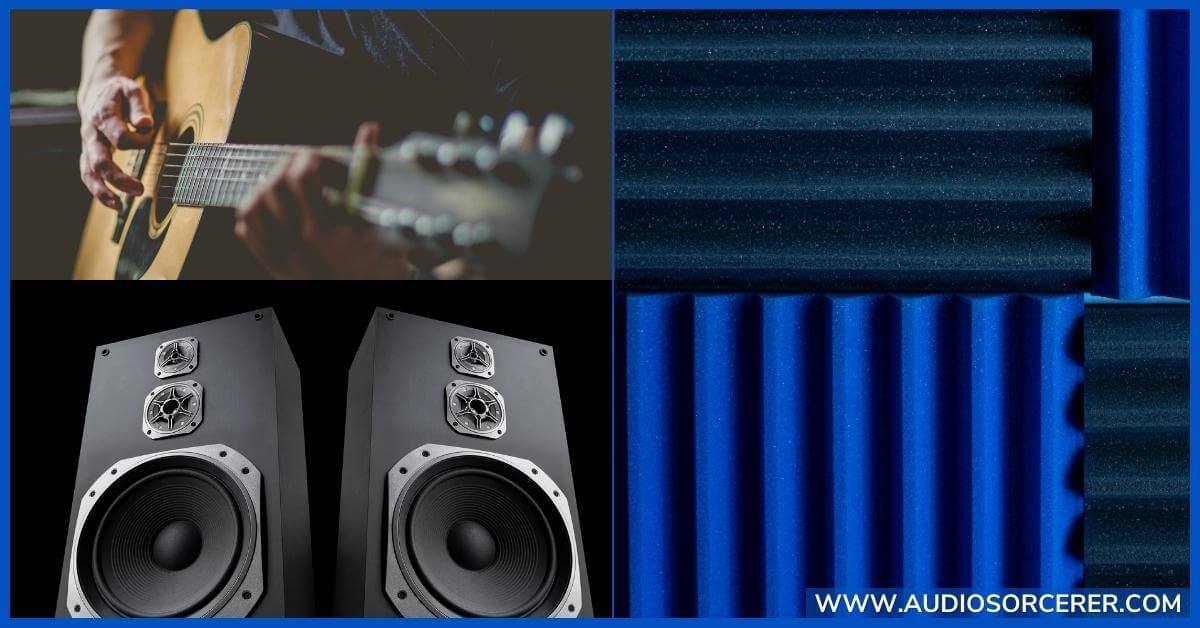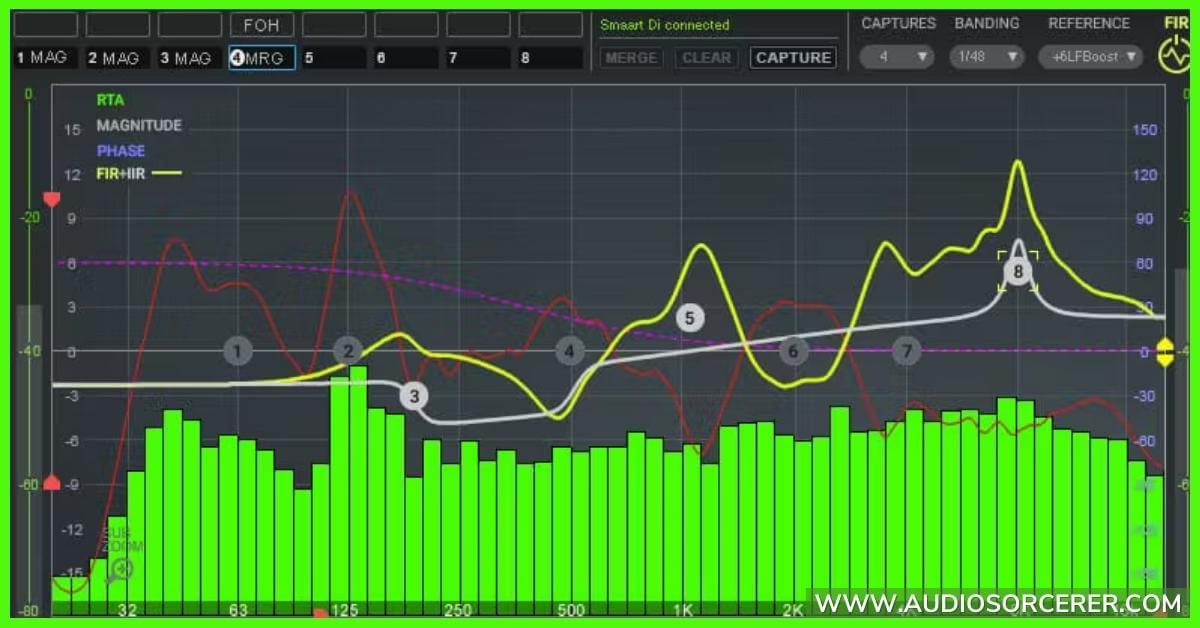
Imagine sitting in a concert hall, bathed in the rich, vibrant tones of your favorite symphony. Each note, from the deepest, rumbling bass to the soaring, sparkling highs, reaches your ears as a uniquely beautiful sound. But what lies behind this mesmerizing sonic experience? One key component is something known as resonant frequency.
In the realm of audio, resonant frequency plays a significant role in sound quality and can be both a helpful tool and a potential challenge for audio engineers. In this article, we will explore the concept of resonant frequency in audio, its impact on sound quality, methods to adjust and control it, and how it can be measured and identified.
Through this journey, you’ll gain a new appreciation for the invisible elements that shape the sounds we enjoy every day. So sit back, get comfortable, and let’s explore the harmonious world of resonant frequency in the world of music.
- What Is Resonant Frequency?
- Why Is Resonant Frequency Important?
- 3 Examples Of Resonant Frequencies
- Impact Of Resonant Frequency On Sound Quality
- Controlling Resonant Frequency In Audio Production (3 Ways)
- Measuring And Identifying Resonant Frequencies In Audio Systems
- Safety Concerns Related To Resonant Frequencies In Audio
- Conclusion
- Frequently Asked Questions (FAQs)
What Is Resonant Frequency?

At its core, resonant frequency is the natural vibration frequency of an object or a system. Think of a swing in a playground: When you push it at just the right pace, the swing goes higher and higher with each push. That pace is essentially the resonant frequency of the swing system.
In the context of music and audio production, resonant frequency takes on a deeper significance. Every musical instrument has its own set of resonant frequencies, which are the frequencies at which the instrument naturally vibrates. These frequencies are determined by various factors, including the material of the instrument, its shape, and its size.
When you strike, pluck, bow, or blow into an instrument, resonance occurs. The instrument responds by vibrating most strongly at its resonant frequencies, producing the sound we associate with that instrument.
The concept of resonant frequency also extends to the realm of audio production. Microphones, speakers, and even the rooms where music is recorded or played back all have their own specific frequency resonance. These can color the sound in subtle ways, adding complexity to the task of capturing and reproducing music accurately.
Why Is Resonant Frequency Important?
The role of resonant frequency in music and audio production cannot be overstated. It’s akin to the invisible puppeteer pulling the strings behind the scenes, guiding the dance of sound waves that we perceive as music. Here are 3 reasons why resonant frequency is important.
Musical Instrument Definition
Resonant frequency shapes the unique sonic identity of musical instruments. Each instrument, from a grand piano to a simple drum, has its distinct natural frequencies. These frequencies play a crucial role in defining the instrument’s tone and timbre, giving it its unique voice.
Harmonies
Resonant frequency is the foundation for the harmonies and dissonances that make music so emotionally powerful. When multiple notes are played together, the resonant frequencies of these notes can interact in complex ways, producing the harmonies and overtones that can make music feel joyful, sorrowful, tense, or relaxed.
Accountability
Sound engineers and producers must account for resonant frequencies during recording, mixing, and mastering. By manipulating resonant frequencies, they can enhance desirable tones, minimize disruptive feedback, and balance the sound to achieve the desired emotional impact.
3 Examples Of Resonant Frequencies

Resonant frequencies can be found in various aspects of audio production. Let’s explore some examples:
Guitar Strings
One common example of resonant frequency in audio is the resonance of a guitar string. When a guitar string is plucked, it vibrates at its natural frequency, producing sound. The resonant frequency of the string determines the pitch of the note played.
Speaker Enclosure
The resonant frequency of a speaker enclosure is primarily determined by its size, shape, and the materials used in its construction. These factors determine how the enclosure itself vibrates in response to the speaker’s sound output.
A well-designed speaker enclosure can utilize its desired resonant frequency to enhance the speaker’s performance. For instance, the bass reflex design, a common type of speaker enclosure, features a vent or port that allows the sound from the rear side of the speaker diaphragm to increase the sound output at the enclosure’s resonant frequency. This design can enhance the speaker’s efficiency, especially in the lower frequency ranges, resulting in a richer bass sound.
Room Acoustics
In room acoustics, resonant frequencies can also have a significant impact. Certain frequencies may resonate in a room, resulting in uneven sound distribution and potentially causing acoustic issues. Identifying and addressing these natural frequencies is essential to achieve accurate sound reproduction.
Impact Of Resonant Frequency On Sound Quality
A system’s natural frequency can have both positive and negative effects on sound quality. When properly managed, resonant frequency can enhance the clarity and richness of audio by emphasizing certain frequencies.
However, if resonant frequency is not properly controlled, it can lead to unwanted resonances, causing peaks and dips in the frequency response. These resonant peaks can result in an uneven frequency response and affect the overall sound balance.
Additionally, resonant frequencies can cause distortion, unwanted vibrations, and even damage to audio equipment if not properly addressed.
Controlling Resonant Frequency In Audio Production (3 Ways)
Audio engineers and producers have several methods to adjust and control resonant frequency in audio systems. Here are some common techniques:
One common technique is the use of equalizers. Equalizers allow audio professionals to boost or attenuate specific frequencies, including resonant frequencies, to minimize resonant peaks and achieve a more balanced frequency response.
Proper speaker placement and acoustic treatment can also help manage resonant frequencies in a listening environment. By strategically positioning speakers and utilizing acoustic panels, bass traps, and diffusers, audio professionals can minimize the impact of resonant frequencies.
By carefully selecting the materials and dimensions of a speaker enclosure, audio engineers can ensure that the system’s resonant frequency will be right for their environment.
Measuring And Identifying Resonant Frequencies In Audio Systems

Audio professionals use various tools and techniques to measure and identify resonant frequencies in audio systems. Here are some commonly used methods:
Spectrum Analyzers
Spectrum analyzers are powerful tools that provide visual representations of the frequency spectrum. By analyzing the spectrum, audio professionals can identify resonant peaks and dips, allowing them to make informed decisions on adjusting the audio system.
Frequency Response
Frequency response measurements can also help identify resonant frequencies. By measuring the audio system’s response to different frequencies, audio professionals can identify where certain areas are oversaturated or a particular frequency is lacking.
Room Acoustics
Room acoustics analysis is another approach to identify resonant frequencies. By analyzing the acoustics of a listening room, audio professionals can identify sound reflections and take appropriate measures to address them, such as adding acoustic treatments or adjusting speaker placement.
Hire A Professional
Listening tests, where trained ears listen for resonances and anomalies, are also commonly used to identify resonant frequencies. Audio professionals with experience and a trained ear can often detect resonances by listening for specific characteristics in the sound.
Related Article: IK Multimedia ARC System 3 Review | Best Room Correction Software?
Safety Concerns Related To Resonant Frequencies In Audio
When dealing with resonant frequencies, there are potential safety concerns to consider.
Excessive resonant vibrations can cause structural damage to audio equipment or even the listening environment. It is important to ensure that they are designed to withstand the vibrations caused by resonant frequencies.
High sound pressure levels resulting from resonant frequencies can also pose a risk to hearing health if not properly controlled. Audio professionals and enthusiasts should always prioritize their hearing health and take appropriate measures to protect themselves from excessive SPLs.
Conclusion
Resonant frequency is a fundamental concept in audio production that significantly impacts sound quality and definition. Understanding how resonant frequency works and how to control it is essential for achieving mixes and masters that translate between different playback systems. By identifying and managing resonant frequencies, audio professionals can enhance the clarity, richness, and balance of sound, resulting in a more natural and enjoyable listening experience.
Frequently Asked Questions (FAQs)
The terms “resonance frequency” and “natural frequency” are often used interchangeably. They both refer to the same frequency at which a system tends to oscillate in the absence of any driving or damping force.
Resonant frequency determines the pitch of a note. For example, in stringed instruments, when the length or tension of a string is changed, it alters the resonant frequency, resulting in a different pitch.
Yes, by changing factors like the tension, length, or composition of a string on a guitar or violin, you can alter its resonant frequency. Similarly, changing the tightness of a drum skin adjusts its resonant frequency.
Yes, parts of the human body can have resonant frequencies. For example, the human chest has a resonant frequency range of around 20-30 Hz, which is why low bass sounds can often be “felt” as well as heard.
In a recording studio, knowledge of resonant frequency is used in the design of the room to prevent unwanted echoes or distortions. It’s also considered when placing microphones and when mixing and mastering to ensure the desired sound quality.
“Some of the links within this article are affiliate links. These links are from various companies such as Amazon. This means if you click on any of these links and purchase the item or service, I will receive an affiliate commission. This is at no cost to you and the money gets invested back into Audio Sorcerer LLC.”



